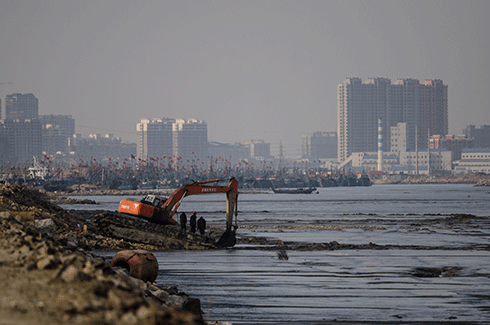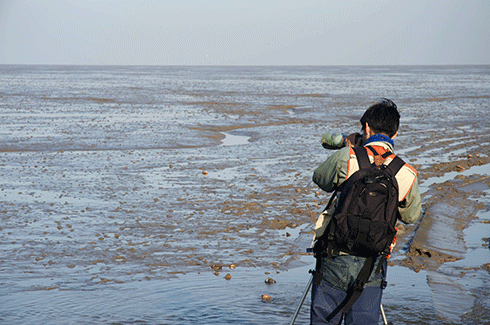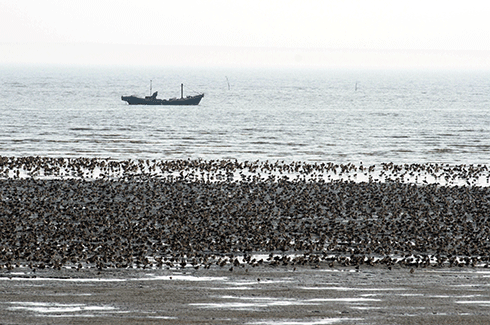
|
Published: 23 December 2013
Still time to change Earth’s long-term forecast
After a lifetime promoting sustainability – sadly, with limited success – last year I sat down to consider what will happen to my beloved world over the next 40 years. The main question I asked myself was whether I should continue worrying about the future during my final 20 to 25 years here on Earth.
My answer is in 2052 – A Global Forecast for the Next Forty Years. The main message is simple: I predict that the world average temperature will surpass 2 degrees Celsius above preindustrial times – the internationally agreed danger threshold – in 2052. And the temperature will continue rising, condemning our grandchildren to the likelihood of climate disaster in the second half of the 21st century.
This means that the global future will resemble one of the 12 scenarios from The Limits to Growth, which I co-authored in 1972. The world will resemble the ‘persistent pollution scenario’, with carbon dioxide as the ‘persistent’ pollutant which, once emitted, resides in the atmosphere with a half-life of 100 years. (For more on the original Limits to Growth forecasts and how they fared compared to reality, you can read this CSIRO discussion paper or this article in The Conversation.)
I do not forecast an energy crisis, a resource crisis, a food crisis, a water crisis – but neither do I expect to see one of the more optimistic ‘sustainability’ scenarios from Limits to Growth. I believe that man-made greenhouse gas emissions will prove to be the real problem.
This is because the human footprint will be smaller than most people expect. The future world population and gross domestic product (GDP) will be much lower than commonly forecast: the global population will peak at 8 billion around 2040, and the world GDP will only grow at 2 per cent per year to 2052 – half historical rates.
There are two major reasons: women will choose to have fewer children and economies will find it more difficult to grow as they mature. As a consequence, humans will use fewer resources and rising greenhouse gas emissions will be the critical factor shaping our life on Earth.
Climate change will trump resource scarcity. One consequence will be a smaller world economy in 2052. Another will be more poverty than commonly forecast.
Climate emissions could easily have been reduced if humanity decided to take action, but humanity won’t because of myopia: simply look at the tepid goals and strategies adopted by the Rio+20 summit last year and the negative reaction from the younger generation of climate activists, who ripped up the negotiating text in protest.
Young people can see from past experience that there will be insufficient investment in solutions. A good life for our grandchildren is being sacrificed for short-term gain for ourselves. In modern democratic market economies, investments mainly flow to what is profitable, not what is needed.
The short-term nature of markets could be modified by legislation – with, for example, a tax on carbon. My point is that this is unlikely to happen in democratic society, because the voter is focused on short-term income growth. Most voters won’t support higher prices for gasoline and electricity.
Another solution could be new multi-national institutions (like the European Union or World Trade Organization) that impose a common long-term perspective on nation states. But a full 20 years of talking after Rio 1992 has produced little progress.
Luckily my forecast is a cliff hanger.
A small change in the human response would suffice to create much better life for our grandchildren. For example, shifting 1 to 2 per cent of the global workforce and global capital into climate-friendly sectors would do the trick.
Workers could make electric cars rather than fossil-fuelled ones, build solar plants rather than coal-fired plants, and construct smaller well-insulated homes rather than big un-insulated ones. The income loss would be small, but the effect on distribution – the split between now and the future – would be big and desirable.
We also need to introduce systems of governance that place more emphasis on long-term effects. Global society needs structural long-termism to counter current short-termism: for example, a world climate bank for greenhouse gas emissions rights.
Concretely, in order to create a better world for our grandchildren, we should:
-
have fewer children, especially in the rich world
-
reduce the ecological footprint, first by slowing the use of coal, oil and gas in the rich world
-
construct a low-carbon energy system in the poor world, paid for by the rich
-
create institutions that counter national short-termism.
But, most importantly, the coming crisis should be used to develop new goals for modern society – to remind us all that the purpose of society is to increase a total life satisfaction, not only to have each person contribute to the gross domestic product.
Jørgen Randers is Professor of Climate Strategy at BI Norwegian Business School where he works on climate and energy issues, scenario analysis and system dynamics. He is a non-executive member of several corporate boards in Norway, and also sits on the sustainability council of The Dow Chemical Company in the US and (until recently) of British Telecom in the UK. Professor Randers co-authored The Limits to Growth (1972) and its sequels in 1992 and 2004. This article was originally published in The Conversation.






